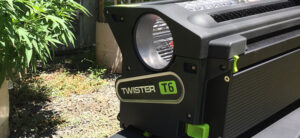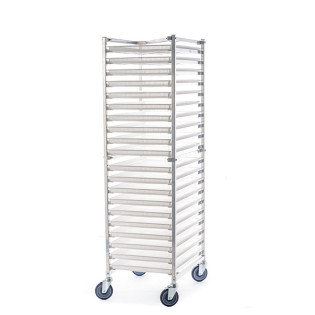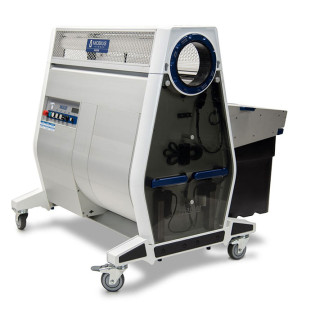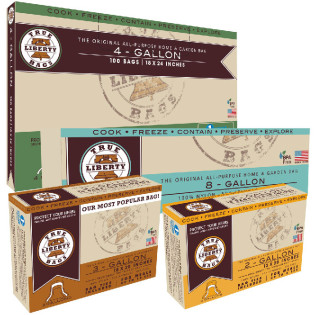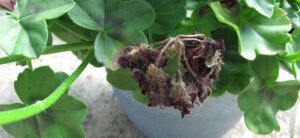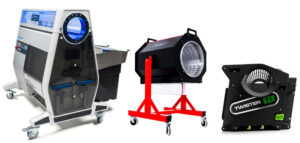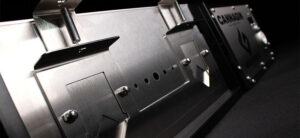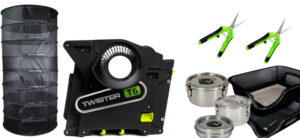
One of the most debated topics in this industry is wet trim vs dry trim - which is better?
Growers on both sides of the fence make valid arguments and swear their method of harvesting is better.
There are good points for each side of the debate, but what it really comes down to is what your flower is used for the size of your yield, and personal preference.
Before we break down the pros and cons of each, let’s explain the difference.
Wet trim vs dry trim - what is the difference?
You may already know the difference between wet trim vs dry trim, or at least be able to surmise it from the names.
If you are new to this topic, the difference between the two styles is just when you trim your flower. This also applies to the first step of the harvesting process, bucking flowers off the stems.
A wet trimming and bucking style involve chopping your plant down and immediately getting to work trimming off all fan leaves and finely manicuring the bud. Then, you will allow them to dry.
On the other hand, dry trimming and bucking is exactly what it sounds like. You will chop your plant down, allow it to dry, and wait until you are satisfied with the moisture content. Then, you will manicure your flower to perfection.
Wet trimming vs dry trimming - Is one really better than the other?
The wet trim vs dry trim debate is really just an example of how different people like different things. To a certain extent, it all comes down to personal preference. But if we had to choose one, we suggest our customer trim their plants when dry for multiple reasons.
However, certain growers will be better suited for wet trimming. If you have a huge crop, you may not be able to find space to hang your plants to dry. So, you'll need to trim wet and dry afterward.
We will break down the benefits and drawbacks of each style so you can make the most informed decision possible.
Benefits Of Trimming Dry
Dry trimming also has the biggest advantages. This is the preferred way, and highly suggest you consider trimming and bucking your plants when dried.
- Dry trimming involves a slower drying process, preserving terpenes and leading to a more enjoyable consumption. For this reason, we believe it's VERY important to trim dry. After all, it's all about the quality of the end product.
- Since trimming dry does not require immediate processing, this makes for a less stressful trimming experience.
- Since sticky trichomes harden during this process, less cleaning will be needed for your equipment.
Downsides Of Trimming Dry
The main problem with dry trimming is you need to be more gentle - otherwise, you may lose some trichomes during the trimming process. If you use a gentle, dry-batch tumble trimmer - this shouldn't be an issue.
- Because your flower has dried out, the trichomes are much more delicate and can be more brittle, so you'll have to trim with caution. This makes the process slightly longer.
- Dry trimming can come with a higher chance of mold, particularly in humid climates. But if you follow the proper steps and provide an optimal environment, you will be better off trimming dry.
- The other big issue is space. Since you'll be hanging entire plants to dry, you'll need to have adequate drying space for a few weeks. If you have more than a couple of plants, this can get tricky.
Benefits Of Trimming Wet
In general, some experts believe wet trimming is the more efficient trimming method, but not necessarily the best. Here are some of the benefits of trimming plants wet.
- Wet trimming can be easier. It is more effortless to remove the large fans and sugar leaves while they are still wet. When those leaves dry, they shrink around the buds making them harder to remove.
- Since trimming wet can be easier, it also tends to be a quicker process.
- Buds dry faster without all the leaves attached, as the leaves retain moisture. When dry trimming this moisture leaches to the buds creating a longer drying time.
- There is a reduced chance for mold to form between the stems and the flowers. This is because of the quicker drying time. This is a bigger concern in moist climates. Mold destroys the harvest and makes it a complete waste.
- Wet trimming takes up less space, as you remove all the foliage off the buds before drying instead of hanging up the entire plants to dry.
- Buds can “puff out”, appearing larger and more aesthetic. If you are a commercial grower, this can be a huge reason to trim wet, as it leads to greater bag appeal.
- Some growers have pointed out that wet trimming allows for better trichome preservation, thanks to the stickiness of the plant. This can maintain the terpenes (flavor) of the final product.
Downsides Of Trimming Wet
- Wet trimming can lower the quality of the product. The sugar and fan leaves help limit how quickly moisture can leave the buds, making for a better moisture level for drying. Think of a low and slow process, which is just how you want it when smoking meats. The same idea applies to drying your harvest. If the leaves are removed, it can cause the buds to dry up too quickly.
- A quicker drying time means chlorophyll will linger longer. More chlorophyll adds a harsh flavor and taste, making it much less smooth.
- Wet trimming is messy. The plants are still sticky, so they get stuck to everything: your fingers, your trimming shears, your clothes, etc. Sticky trimming shears have to be cleaned up often during the process. Using gloves is usually necessary. Coconut oil or rubbing alcohol can help with the clean-up.
- Another main issue is that trimming wet front loads a lot of work in a short period. Trimming must be done instantly after harvest. This can be a difficult and time-consuming process to do in a short period of time.
Which Trimming Style Is Best For Commercial Harvests?
When it comes to commercial harvesting, however, there are other things to consider. Often times, commercial cultivars are harvesting every few weeks, if not more often.
In these instances, speed is even more important. This is why many commercial growers opt for wet trimming. You can trim the product faster wet, and then dry it faster as well, with less leafy material on the flower.
So you can get your product to market faster, which is huge. However, there will likely be some level of terpene loss when trimming wet.
This is because you'll be drying the flower already trimmed, and there aren't any sugar leaves to help preserve the terpenes during this next step. The quicker dry means great loss of flavor and aroma.
The flower will also have less bag appeal. So, while you'll be able to get the product harvested and ready for sale quicker, you may not be able to command the same prices with a wet trim.
When you dry your harvest and then trim, you'll achieve higher quality with a longer, slower drying period which preserves terpenes better.
In the past, trimming dry earned a reputation for damaging trichomes. The theory was that since the dried flower is more brittle and easier to damage, the tumbling will knock off more trichomes.
However, this is not necessarily accurate. Many trimming machines are optimized specifically for dry trimming, and this means they won't damage your trichomes.
While dry trimming will result in higher quality flowers, you sacrifice time, and time is money.
And, you'll have a harder time finding adequate space to dry your huge commercial harvest, since you'll likely be drying whole plants.
With all this in mind, you have to consider which method makes more sense for your business.
In summary, wet trimming is faster, and dry trimming produces greater quality. But, you also have to consider how much space you have to dry.
Use wet and dry trimming for the good results!
Another option is to remove a lot of the fan leaves right before harvesting. This will take some of the work off your plate after your buds are dry, and result in a faster drying process.
This leads to a greater preservation of your trichomes, since the small sugar leaves protect them. You can get the best of dry trimming and wet trimming at the same time, without all the cons!
Many commercial growers will trim wet just to knock off some of the bigger leaves, and then manicure the buds by hand to achieve the boutique-style look that many consumers expect these days.
Whether you trim wet vs dry we have the trimming supplies you need!
Regardless of which side of the wet trim vs dry trim debate you fall on, we have the trimming machines and hand trimming supplies you need here at Hydrobuilder.
We have wet trimming machines and dry trimming machines so that you can optimize your equipment for your grow.
If you aren't sure which style of trimming is right for you, reach out to us at 888-815-9763 and we can talk you through it!





